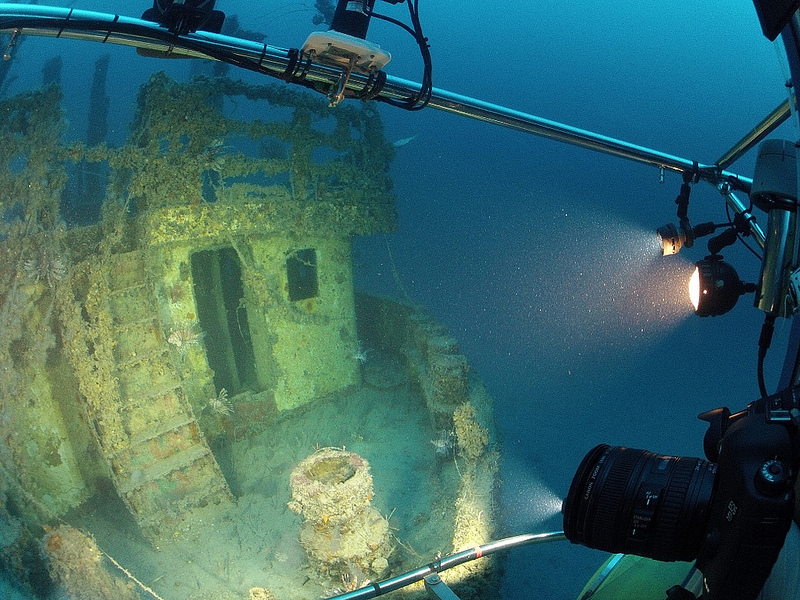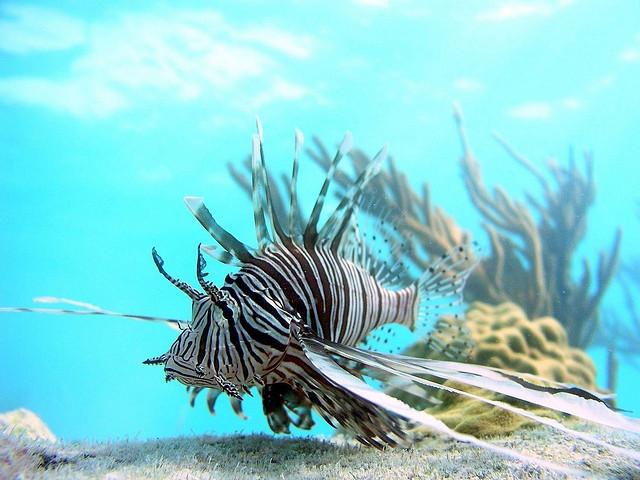Big Lionfish Found at Disturbing Depths

The relentless scourge of lionfish has crept to unexpected depths: Off the coast of Florida, researchers say they found the venomous invader thriving around a sunken ship at 300 feet (91 meters) below the water's surface.
"We expected some populations of lionfish at that depth, but their numbers and size were a surprise," researcher Stephanie Green, of Oregon State University, said in a statement.
Last month, Green and colleagues investigated the seafloor near Fort Lauderdale, Fla., in a deep-diving Antipodes sub. At 300 feet (91 m) deep, the team witnessed a large number of the spiny fish near the intentionally sunken Bill Boyd cargo ship, an artificial reef created in 1986. [See Photos of Lionfish & Other Freaky Fish]
While lionfish are typically between 12 and 15 inches (30 to 38 centimeters) long, the Oregon State researchers say they saw unusually large specimens as big as 16 inches (40 cm) long.
"This was kind of an 'Ah hah!' moment," Green said. "It was immediately clear that this is a new frontier in the lionfish crisis, and that something is going to have to be done about it. Seeing it up-close really brought home the nature of the problem."
Native to tropical Indo-Pacific waters, lionfish were introduced to the Atlantic by humans in the 1990s, likely through the exotic pet trade. Now found in reefs from North Carolina to South America, the rapidly reproducing invasive fish have voracious appetites, gobbling up native fish and competing with other species for food resources.

Worse, lionfish have no natural enemies in Atlantic waters, except spear gun-toting humans. Another study, detailed online July 11 in the journal PLOS ONE, found that not even sharks can curb red lionfish populations in Caribbean reefs.
Sign up for the Live Science daily newsletter now
Get the world’s most fascinating discoveries delivered straight to your inbox.
Researchers are trying to figure out what is keeping lionfish in check in the Pacific so that they might stem the Atlantic invasion, which thus far has looked to be unstoppable. Prepared correctly, lionfish are said to make a tasty meal, but one prick from the fish's venomous spine can cause excruciating pain. Lionfish derbies to bring in big catches of the predator have been held in Florida and the Caribbean.
"A lionfish will eat almost any fish smaller than it is," Green said in a statement. "Regarding the large fish we observed in the submersible dives, a real concern is that they could migrate to shallower depths as well and eat many of the fish there. And the control measures we're using at shallower depths — catch them and let people eat them — are not as practical at great depth."
Lionfish also can produce far more offspring when they are large. A big, mature female in some species can have up to 10 times as many offspring as a female that's half its size, researchers say.
Follow Megan Gannon on Twitter and Google+. Follow us @livescience, Facebook & Google+. Original article on LiveScience.com.










